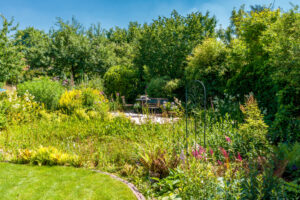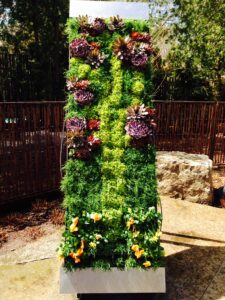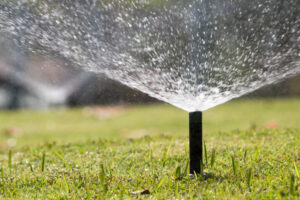When it comes to designing a stunning landscape that is environmentally friendly, you can have your cake and eat it, too. These five environmentally friendly landscaping ideas show you how.
Sustainable vegetation
A transition to sustainable vegetation does not require that you rip out all of the non-native plants in your yard; they are integral to existing natural processes in your yard. Rather, focus on removing invasive species and incorporate native plants over time.
Reusable garden materials
A commitment to environmentally friendly landscaping extends to reusable materials. One of the most popular reusable garden materials is natural stone.
Natural stone is a strong design element used to create visually stunning landscapes. Simple yet beautiful stone BBQ, for example, can be built to last a lifetime, and stone retaining walls can add drama to your exterior look. Natural stone is also the perfect choice for outdoor entertaining areas, staircases, and inviting walkways. When you want to change out your walkway, you can reuse your stones again, and again.
Green roofs – horizontal or sloped
Living walls
Also called green walls, living walls are the vertical version of a green roof. Also, they are just as versatile and make a lovely, easy addition to your environmentally friendly landscaping. A green wall is an area covered in plant materials. The plants can be grown on mats, in soil, in an organic growing medium, or in water. You can build a living wall up the side of a building, on your retaining walls, or on any other vertical surface. And, they can double as an additional garden area because a living wall can be built with edible plants.
Water conservation
Your landscaping will require a customized irrigation system because each yard is its own microclimate, formed by the vegetation in your garden, slope, and the like. One needs to take account of sunny versus shady areas, for example, so a one-size fits all approach to your irrigation can jeopardize your ability to conserve.
Sprinklers should be run in the early morning, when the air is cooler and less evaporation will occur. In humid climates, watering in the early night can facilitate diseases because the water sits on the plants through the night. Automatic sprinklers will deliver water only to the areas that need it, in the amount needed, and during time of the day when water savings are greatest.
Ready to go truly green? Contact Lawrence Park Complete Garden Care.


